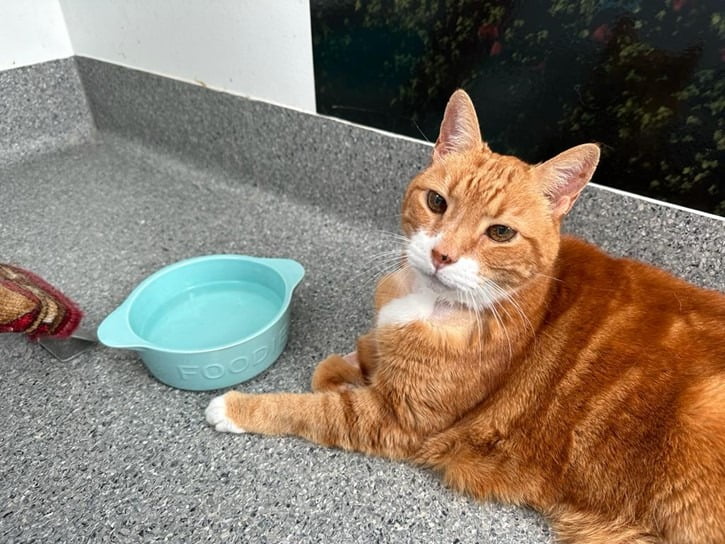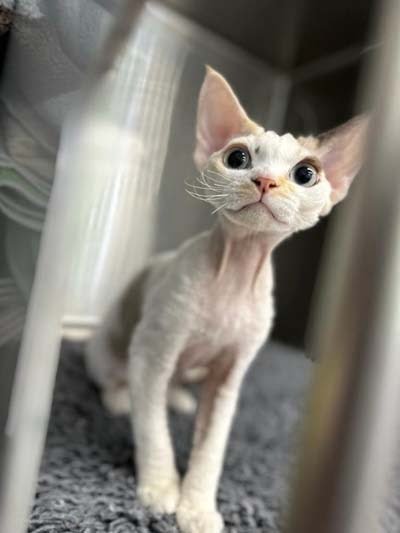A Turramurra Vet Pet Care Article
Water Requirements and Drinking Habits of Cats

Water Requirements and Drinking Habits of Cats
by Freya Britt-Lewis, Pet Health Care Writer
Most cat owners will know that our feline companions can be picky, especially when it comes to what they eat and drink! Cats are creatures of habit, who most times want to stick to their own routine. This is especially true when it comes to how we offer them water. Small things such as distance to food, location in a room, or the shape of a bowl can deter your cat from drinking, even when they need to!
Hydration in cats is important, despite the fact they are a desert species and so have a low thirst drive. In fact, they have a much greater ability to survive on less water than their canine counterparts!
As cats are mammals, 60-70% of their bodyweight is made up of water. Hydration will affect their organ function, digestion, circulation, as well as prevent likelihood of urinary tract stones and aid in supporting their kidneys.
Did you know cats are very inefficient when it comes to drinking, only taking in 3% of a teaspoon of water per lap?
What are the signs of dehydration in cats?
- Dry gums
- Lethargy or depression
- Loss of appetite
- Decrease in skin elasticity
- Elevated heart rate
To test for dehydration, a quick and easy technique called “skin tenting” can be used. To do this, gently pinch the skin over your cat’s shoulders. If the skin remains gathered when released, or does not return to normal immediately, then this is a sign that your cat could be dehydrated.
Dehydration is serious. If you notice or believe your cat is dehydrated, be sure to make a veterinary consultation as soon as possible.
How much water should a cat drink per day?
This will vary according to your cat’s diet, as wet food generally contains approximately 70% water.
Some diseases such as diabetes, chronic kidney disease and hyperthyroidism (overactive thyroid hormone) can cause an increase in water consumption in cats.
It’s helpful to know what your cat usually drinks as a baseline measurement, so that if there is a noticeable increase, you are aware.
Measure your cat’s water intake by placing a measured quantity of water (e.g. 500mls) across a couple of water bowls that your cat has access to. After 24 hours, pour the remaining water back into a measuring device to work out what your cat has drunk in that time. If you cat is drinking more than 50mls/kg of water over 24 hours, then this is an indicator that your cat is polydipsic, or drinking excessively amounts of water, and could be an indicator that your cat’s health needs attention.
If you notice a trend upwards in your cat’s water intake, it is worthwhile booking in for a blood test with your vet. The earlier health problems are diagnosed, the better the outcome.
What are some tactics to get your cat to drink more water?
As cats age, their kidneys require more water to support them, so your vet may recommend trying to encourage your cat to drink more water.
 Cats are ultra-sensitive to taste and presentation, so it is important to make water as accessible to them as possible.
Cats are ultra-sensitive to taste and presentation, so it is important to make water as accessible to them as possible.
Top FIVE tips to encourage your cat to drink water
- Choose the right water bowl: Even the type of bowl can deter your cat from drinking. A narrow, deep bowl may touch their whiskers and cause discomfort. Instead, try a wide, shallow bowl to avoid this. On the other hand, some cats like drinking from a glass filled to the brim!
- Place it in the right location: Cats dislike being put in small nooks and crannies. Make sure your water bowl is placed in an accessible spot, where they can observe their surroundings easily, feeling less vulnerable.
- Keep food and water apart: Cats will be less likely to drink out of a water bowl kept near their food. Move your water to its own separate location to avoid contamination and fussy cats turning their nose up at their water! Having at least two water sources is recommended.
- Make sure the water is fresh: If water is left too long, a build-up of dust, dirt and hair will make the water unappealing to your cat. Make sure you replace the water daily to ensure optimal freshness.
- Use a water fountain: Some cats will greatly prefer drinking from a water fountain than still water. This may be because they perceive running water as fresher (as it is in the wild). Sometimes, you may find your cat lapping at the kitchen tap, bathroom sink or even the shower recess!
Sometimes, even if you try all the above tips and your cat still won’t drink. The fact is, that cats are actually desert species, so have developed kidneys that can concentrate urine very effectively. It is fairly normal not to see a cat drink very much at all, particularly if they are on some wet food as well as dry, because wet food is 70% water.
In older cats with chronic kidney disease, supplementing wet food with water can help avoid dehydration when their kidneys no longer function as well.
Remember – a hydrated cat is a healthy cat. Make sure your cat always has clean, fresh water in a quiet accessible location.

